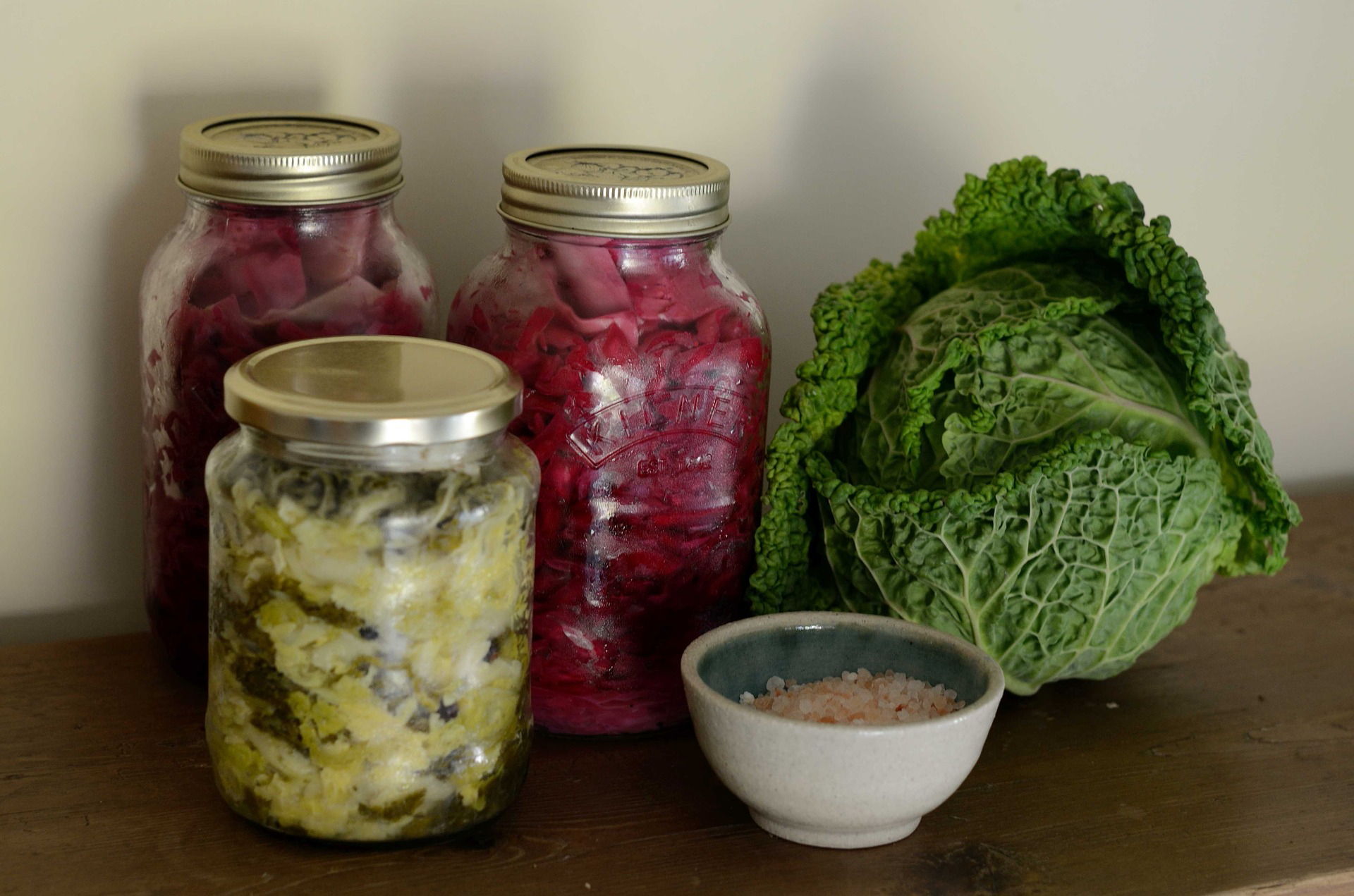Sauerkraut

Sauerkraut is gaining popularity again as the message about the importance of gut-health is spread.
Sauerkraut is very rich in probiotics and beneficial bacteria that line the gut and help to build our immune system, and manufacture and assimilate vitamins.
The process of lactic acid fermentation used to transform salt and cabbage into sauerkraut increases vitamins, particularly vitamin C (around 400 times the amount once fermented!), B vitamins and food enzymes.
Sauerkraut, and other fermented foods and drinks, may also play a role in the following areas:
- Mitigation of risks for metabolic syndrome
- Reduce body weight and blood pressure in the overweight and obese
- Inhibit autoimmune diseases
- Inhibit development of allergy
- Have anticancer effects
- Inhibit development of atherosclerosis
- Improve mood and mental health
- Have antimicrobial effects on some of the most common gut pathogens, including Listeria, Staphylococcus, Salmonella, Vibrio, and Enterobacter.
Once you get confident with the basic sauerkraut, there are SO many variations that you can make. Kimchi is a spicy variation (from South Korea) and includes extra vegetables and spices (and many different variations within this too), or you can also add onion, apples, blueberries, capsicum, beetroot or your favourite spices to it. Let your imagination and taste buds run free!
If you’re interested in other fermented drinks then check out this article which outlines the benefits of kombucha and then a recipe at the end to get you started!
Ingredients
- 8 cups finely chopped cabbage (red or green)
- 1/2 tablespoon good quality salt (e.g. Himalayan, Celtic sea salt) i.e. ~1/4 teaspoon salt per 1 cup cabbage
- Optional ingredients:
- Onion and apple (finely chopped)
- Spinach and blueberries
- For a Kimchi variation add: 2 carrots, 1 thumb ginger and radish, 2 cloves garlic (all finely shredded and chopped), chilli to taste
Directions
Finely chop the cabbage and place it into a large bowl and sprinkle the salt on top.
Combine the cabbage and salt and massage using your hands for about 10 minutes or until the salt has dissolved. After this time the cabbage should have released a fair bit of liquid and the cabbage will have shrunk down to about half the original amount when raw.
If you’re adding any additional ingredients to your sauerkraut such as onion, apple, blueberries and spinach - mix these into the bowl with the cabbage now. If you're making a kimchi variation, then massage all the ingredients with the cabbage.
Put cabbage into a glass jar with an old cabbage leaf on top to keep the chopped cabbage submersed in the liquid. If there is not enough liquid from the cabbage just add some filtered water.
Keep the jar at room temperature for 7-14 days (or longer), then taste and refrigerate when ready. If any scum appears on top just scoop it off and ensure that the cabbage is still submerged in the liquid. Trust me you will know if the sauerkraut has gone off!
